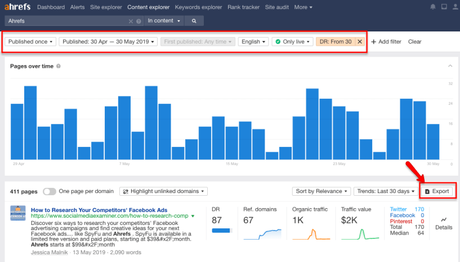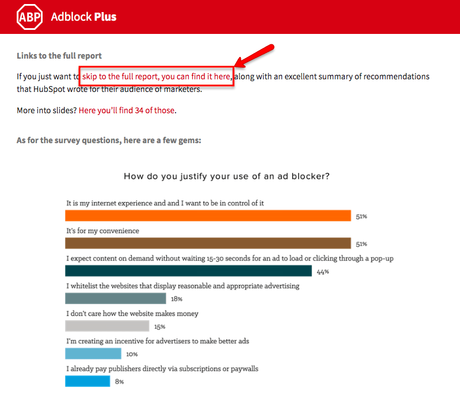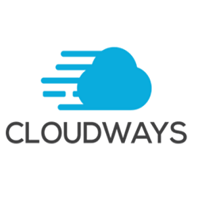Your PR efforts are paying off: You have blogs and media publications mentioning your brand, and your audience gets to learn about you.
What if I told you there's a way you can leverage these mentions to improve your visibility in search engines as well?
Easy Ways to Build High Quality Links 2019
What are unlinked brand mentions?
As the name suggests, unlinked brand mentions are online citations of your brand - product, service, data report etc. - that don't link back to your website.
Here's an example:

This is one example, but you can find similar opportunities by looking for:
- Unlinked Images (such as graphs, badges, or brand logos etc.)
Now you're probably wondering:
- How can I find such opportunities for my brand?
- How can I reach out to them?
- What links/results should I expect?
Let's explore these questions in detail and see how we can apply them to our three link building tactics - unlinked brand, images and coined terms mentions.
Unlinked Brand Mentions
To start earning links, you first need to find those articles that mention your brand, product or service, but don't link back to you.
Method 1: Easy Ways to Build High Quality Links by Reclaiming Brand Mentions
You can start by using Google Search operators and tools to find the latest articles that mention your brand, product or services.

Use "-site:" to exclude different domains from your search results: Your own website or domains, social media websites, job listing websites like Glassdoor.com etc.
Before reaching out to any of these websites, make sure each opportunity is worth pursuing, by checking:
If a website has a low authority and no referring domains, their link will probably have a low impact on your SEO performance. So maybe it's not worth investing the time and effort to reach out to them.
- What's their Domain Authority/Rating? (depending on what tool you're using)
- How many Referring domains they have?
: Method 2Best Tools to Build High Quality Links
Use tools, like or Content Explorer, to track mentions and other metrics relevant to your outreach.
This method is faster and more accurate than the first one, as you can already use the data provided by these tools to filter our the right opportunities.
Here's an example of how to use Ahrefs Content Explorer to find brand mentions. You can use the tool's filters to find:
- recently published articles
- any language you're looking for
- only websites above (or below) a certain Domain Rating (DR)

Once you're done filtering out your results, you can export the list to .csv or .xls and go through each of the results, evaluate and prioritize them. To do so, you need to establish a list of criteria of what makes a website a good fit for your outreach.
It also helps having a list of "negative signals": reasons why the author might not link back to your website, for whatever reason. To help you get started, I built a list of such signals I use in my own approach:
Negative Signals:-
They already link back to your website or landing page from the brand mention
The website has a low Domain Rating/Authority (<20)
The website has no-follow tags on all the outbound links
They article only links internally or to .edu, .gov websites
It's a "Sponsored" article
The article was written by a competitor
The articles doesn't have a visible author (was published by "admin")
Now, after identifying the negative signals, you've probably managed to narrow down your list to high-quality opportunities. The next step should be preparing an outreach template.
Here's an example:
Hi [Name],
[Short intro: Your name & company etc.].
I am reaching out to thank you for mentioning us in your recent article - We noticed the effort and we really appreciate it.
I have a quick favor to ask: I was wondering if you could add a link to us (https://www.brand.com) where you mention "brand name" in case your readers want to know more about what we do?
Of course, if you ever need more information about "brand" (imagery, video content, etc.) get in touch and I would be happy to arrange some for you.
Thanks again for everything.
Now, let us take a look at the next tactic: Unlinked images.
Unlinked Images
This is a great tactic if your website often publishes research results, in a graphic form, or if your brand offers badges to Top users, content promoters, courses graduates etc. Often times you'll see bloggers and publishers using those graphs in their own articles, but without a proper link attribution.

In this case, the publisher linked back to the original source. But how can you find those that don't?
Here are a few methods to try out:
Method 1:

Next step is to build a list of all of those results and filter it to find the opportunities worth pursuing. Do that the same way you had to qualify the results from your unlinked brand mentions: asses the website's authority, make sure they don't already link to the original source and check for negative signals.
Once your outreach list is ready, here's an email template you can use to reach out to those websites:
Hi [Name],
[Short intro: Your name & company etc.].
I just came across your article about [...] and I wanted to drop a quick message to say thank you for mentioning [our report/data study etc.].
I noticed you included a [chart/graph/infographic] citing our data so I thought I'd reach out for a quick favor: would you mind adding a link to the original report (link) where you cite the source, in case your readers want to learn more about this?
Of course, if you need more information or imagery for your future articles, please don't hesitate to reach out to me - I'd be happy to help.
Thanks again.
Unlinked Coined Terms
A "coined term" is a word or a phrase that someone creates; they are the first to use it and they can claim they "coined it". This term is often used to describe something new that may be related to a place or a particular strategy just to mention a few.
Often times, when the term becomes popular, other publishers can borrow and mention it. Such mentions help expose the new term to audiences and readers, making I widely known.
For example, successfully coined the term " Skyscraper Technique " for describing a particular link building tactic. The term quickly became popular among SEO specialists and it's been mentioned on many blogs, which ultimately earned Brian a ton of links.

You can use the same tactic to build high-quality links to your website.
You can either include this "coined term" tactic in the thought leadership content you publish. Also, you can start thinking in this direction and see if there are any terms your team might have accidentally coined.
Either way, use the same methods as in the previous tactics to find and select relevant websites to reach out to.
While this tactic, might require more creativity than the previous ones, in the long run, it will help build bring more awareness to your brand.
Quick Links:-
Brian Dean's Skyscraper Technique page has over 14000 backlinks (Source: Ahrefs)One Last Thing: Consider This Before Any Outreach Campaign (How to Build High Quality Links by Reclaiming Brand Mentions 2019)
Whenever you are preparing and creating an outreach template, there are few things you need to keep in mind before sending it.:
After you sent your email, make sure you:

- Don't overuse templates;
- Find elements you can customize to create personalized email campaigns ;
- Analyze if your CRM integrates with other outreach software or Chrome Extensions
- Check if the person you want to email hasn't opted-out of communication with your company. Check your CRM and see if you have an "Unsubscribed" list.
- Company has worked with that blogger before (co-marketing, client, etc.). Knowing that some is a client or a supplier might change the way you address them.
- Follow-up a few days after you first emailed them, then, one last time, about a week after.
- Reply to each email you receive, even the ones that reject your partnership proposal. Don't always take no for an answer. Follow-up with an alternative that might work for your potential partner.
- Expand the partnership, when you see the opportunity e.g. to a co-marketing partnership

